SS Sonderkommando Belzec
Lower Ranking Officers
Listed in Alphabetical Order
BAER, Rudolf
Born on March 28, 1906, in Leipzig. He was a carpenter from Halle-an-der-Saale in Saxony-Anhalt. He worked for the T4 institution as a cook at Bernburg. Served at Belzec and Treblinka death camps in the administrative office. He also served at the Old Airfield camp in Lublin and later in Trieste. In May 1945, he was interned in a Prisoner of War camp near Kircbach, Austria. He escaped and has never been traced.
BARBL, Heinrich
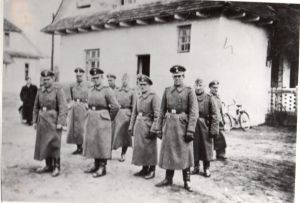
Heinrich Barbl far right outside the Kommandantur at Belzec
Born on March 3, 1900, in Sarleinsbach, Austria. He worked at the T4 institution at Hartheim, before being sent to the Belzec death camp in Poland, where he helped install the gas pipes. He referred to himself as the Hausklemper (plumber) and worked with Erich Fuchs on the installation of pipes in the gas chambers of the death camp at Sobibor.
BLAUROCK, Emil
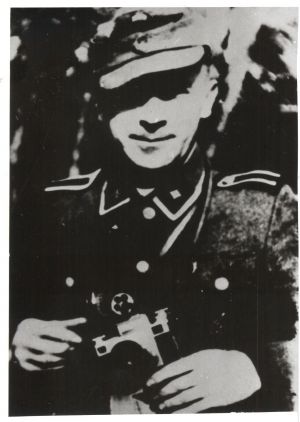
Emil Blaurock
Born on January 25, 1897. He was a male nurse at Pirna/ Sonnenstein. Served at Belzec and Sobibor. He was detained by the US Army in Bad Aiblingen, Bavaria. He was discharged from internment on April 19, 1946.
BOROWSKI, Werner
Born on October 23, 1913, in Sprottau in the Prussian province of Lower Silesia. Served at the Bernburg T4 institution as head of the economics office. Posted to the Belzec death camp in early 1942, and then onto the Treblinka death camp. Because he fell victim to the typhus epidemic in the camp, he was sent back to Bernburg after recovering. He joined the Luftwaffe and was reported 'missing in action,' presumed killed.
BREE, Max
Born during 1914 in Lubben im Spreewald. Following service in T4, he was posted to Belzec death camp from June / July 1942 until September 1942, when he was transferred to Treblinka death camp. around June of 1943, to the Sobibor death camp. He supervised the Ukrainian guards as well as the Jewish workers in the sorting barracks. He was killed during the prisoner revolt at Sobibor on October 14, 1943.
DACHSEL, Arthur
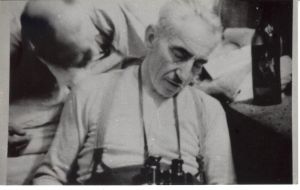
Arthur Dachsel in foreground with Franz Wolf
Born during 1890, in Bohlen, Sachsen. He worked at the T4 Institution at Pirna/ Sonnenstein, where he incinerated bodies. Served at the Belzec death camp in Poland and in July 1942, was transferred to the Sobibor death camp, where he supervised the Waldkommando. Promoted to the rank of Oberwachtmeister in March 1943. He was remembered byThomas 'Toivi' Blatt, who survived Sobibor, as one of the least brutal SS-men.
DUBOIS, Werner
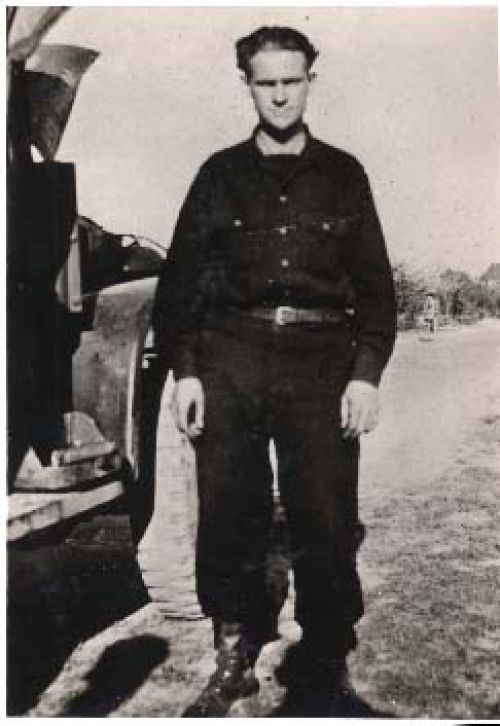
Werner Dubois
Born on February 26, 1913, in Wuppertal- Langenfeld. He was brought up by his grandmother. After school he worked as a joiner, brushmaker, printer and on a farm. He joined the SS in January 1937, and worked as a driver for the Gruppenkommando Oranienburg. He also served as a driver and a guard at the Sachsenhausen Concentration Camp.
In August 1939, he was transferred to the T4 organisation where he drove buses and worked as a 'burner' in a number of T4 institutions in Bernburg, Brandenburg, Grafeneck and Hadamar. Following a brief spell in Russia working for the Organisation Todt, he was transferred to the Belzec death camp in April 1942, he admitted shooting Jewish prisoners there. In the summer of 1943, he was transferred to the Sobibor death camp, after Belzec was closed.
At Sobibor, he was in charge of the Waldkommando and was attacked in the armoury on the day of the prisoner's revolt on October 14, 1943, and suffered serious wounds. Dubois was acquitted at the Belzec trial in August 1963. However, he was sentenced to three years imprisonment at the Sobibor trial in Hagen in 1966.
FEIX, Reinhold

Reinhold Feix -third from left at Belzec
Born on July 3, 1909, in Neundorf/ Oberschwarzbrunn, Sudetenland and he settled in Gablonz on the Neisse River. Following his time in the SS training camp at Trawniki, he served in the Belzec death camp. At Belzec, he was one of the most brutal and feared SS on the camp's staff.
He was then appointed commandant of the Jewish Labour camp in Budzyn. He left Budzyn during August 1943, and disappeared. He survived the war and died at his home in Amberg, Bavaria, on May 30, 1969.
FICHTNER, Erwin
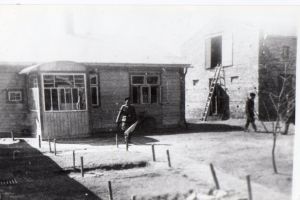
Erwin Fichtner emerges from the Administration Building at Belzec
Born on January 12, 1912, in Trachenberg. Served as a cook in the T4 institution at Bernburg. At Belzec he was the camp quartermaster. He was killed by Polish partisans on March 29, 1943, near Tarnawatka, 17 kilometres north of Belzec, on the road to Zamosc. He was buried in the German military cemetery in Tomaszow Lubelski. His remains were exhumed in 1996, and re-buried in the German military cemetery in Przemysl.
FLOSS, Erich, Herbert
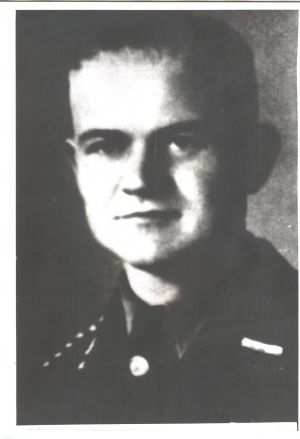
Erich Herbert Floss
Born on August 25, 1912, in Reinholdsheim. He attended elementary school and after graduating, he trained in textile dyeing, but could not secure a position in this line of work, and consequently worked in several other jobs. From April 1, 1935, he served in the 2 Totenkopfsturmban Elbe (Death Head's Unit Elbe), he saw service in the Buchenwald Concentration Camp, and also served in the T4 institution at Bernburg.
Floss was to make a name for himself as the Aktion Reinhardt cremation expert, which he put to good effect at Belzec, Sobibor and Treblinka death camps during 1943. Floss was nicknamed 'Tadellos' - 'Perfect' by the Jews of Treblinka - this was his favourite expression. Floss served mainly at Sobibor. He was one of the SS men who took the victims' last possessions before they entered the 'Tube' leading from Camp II, to the gas chambers.
One week after the prisoners revolted at Sobibor on October 22, 1943, Floss escorted a group of Ukrainian guards to the Trawniki training camp, he was killed by shots from his own machine gun by Trawnikimanner Wasil Hetmaniec, between Chelm and the village of Zawadowka.
FRANZ, Kurt Hubert

Franz in Belzec - nearest the camera
Kurt Franz was born on 17 January 1914 in Dusseldorf where he attended elementary school from 1920 to 1928. After leaving school he trained first as a master butcher and then as a restaurant chef in the 'Hirschquelle' restaurant, and then in the 'Hotel Wittelsbacher Hof' in Dusseldorf. He did not take the final qualifying examination.From 1935 -
In November 1939, Franz and a group of 10 other SS-
Sometime during the dates of 19-
During the spring of 1943, Franz was promoted to the rank of SS-
In May 1945, Franz was arrested in Austria, by the American forces, but escaped to Germany, where he was re-
Franz was the main defendant at the First Treblinka Trial in Dusseldorf during 1964 -
FUCHS, Erich
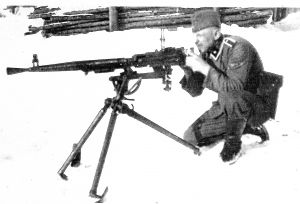
Erich Fuchs outside the Kommandantur in Belzec
Born on 9 April 1902 in Berlin. After his education in an elementary school he trained to become a skilled motor mechanic and automative foreman. Before the Second World War he was a driver in Berlin and he joined the Nazi Party in the early 1930's and became a member of the SA and later the SS
He was drafted to T4 he worked as Dr Eberl's driver in the T4 institutions at Brandenburg and Bernburg, and was, as he expressed himself, 'an interested spectator' at the gassing of 50 mental patients.
In the winter of 1941 Fuchs was selected at Bernburg by Christian Wirth and posted to Belzec death camp. At Belzec he installed the" showers" the disguised gassing facilties and worked as a truck driver, in the motor pool transporting material to the death camp site. In April 1942 he collected a Russian water-
Erich Fuchs was then posted to Treblinka to assist with the installation of an engine in the gas chamber, which he testified; "Subsequently I went to Treblinka. In this extermination camp I installed a generator which supplied electric light for the barracks. The work in Treblinka took me about three to four busy months. During my stay there transports of Jews who were gassed were coming in daily."
In December 1942 Fuchs managed to arrange his release from T4 and from early 1943 he worked for the German oil company Ostland – Ol-
Fuchs worked till 1962 at a number of jobs as an assistant worker, locksmith and truck inspector at the TUV in Koblenz, he was arrested and held in custody from 8 April 1963. The Schwurgericht am Landgericht Hagen sentenced him to four years imprisonment on 20 December 1966 for being an accessory to the murder of at least 79,000 people. He died in Koblenz on 25 July 1980.
GIRTZIG, Hans
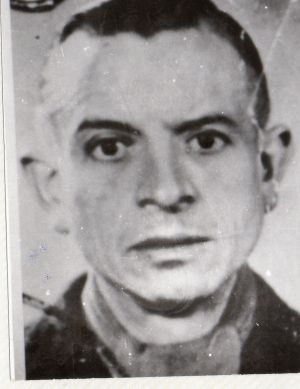
Hans Girtzig
Born on April 23, 1905, in Berlin. Served in the canteen in the T4 institutions of Grafeneck, Hadamar and Hartheim. Transferred to Belzec in the middle of 1942. When Belzec was closed down in May 1943, he served at the Poniatowa Jewish labour camp. After the war he returned to Berlin. Arrested to stand trial during the 1960's, he was released due to ill-health (multiple sclerosis).
GLEY, Heinrich
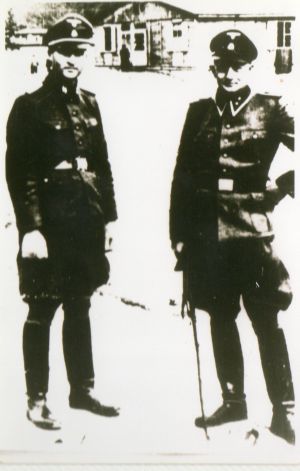
Wallerang and Gley in Poniatowa Camp
Born on February 16, 1901, in Rodlin, Mecklenburg. After completing elementary school education, he worked on a farm until 1919. From 1929, he worked as a male nurse. He joined the Nazi Party in 1932 and entered the SS in 1934. He joined the T4 organisation on January 4, 1940. He served at the T4 institutions at Grafeneck, and Pirna/ Sonnenstein. During the winter of 1941-42, he served in an Organisation Todt transportation unit for wounded soldiers on the Eastern Front.
In mid-August 1942, he was transferred to Belzec death camp, where he worked on the ramp and the Undressing Barracks. When Belzec was closed down in May 1943, he was transferred to the Poniatowa Jewish Labour Camp. He served in Italy, but was sent to Berlin in late 1944, due to ill health. He was discharged from Prisoner of War status on December 29, 1947, and worked as a bricklayer in Munster. He was acquitted at the Belzec trial during the 1960's.
GRAETSCHUS, Siegfried

Siegfried Graetschus
Born on 9 June 1916 in Tilsit, East Prussia. After extended elementary education, he became a farmer and was a member of the NSDAP from 1936. He served at the Sachsenhausen Concentration Camp, as confirmed by the War Crimes Group in 1947.
Graetschus was posted to the Belzec death camp and was involved in the early gassing experiments, including the conversion of a Post Office parcel van, into a gas-
GRINGERS, Max

Max Gringers - Fifth from left at Belzec
Born during 1898. He served at the T4 institutions at Bernburg, Hadamar and Hartheim. Served at Belzec. He was killed on active service in Italy during 1944. He was buried at the German Military cemetery in Costermano, Italy.
GROTH, Paul
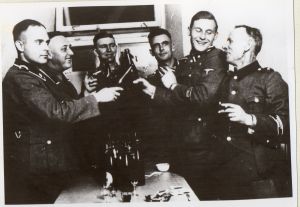
Paul Groth - first left celebrating with Hering, Bolender, Zierke and others
Born on 9 February 1922 in Holthausen, Schwein. He served at the T4 institute at Hartheim near Linz, Austria. Groth was posted to the Belzec death camp in January 1942. Christian Wirth transferred Groth to the Sobibor death camp in April 1942, where he supervised the sorting activities in Lager II. He was regarded by the prisoners as one of the worst sadists. However, Groth fell in love with a Jewish girl called Ruth, who was shot in Lager III. Groth was transferred back to the Belzec death camp in December 1942. Groth was in charge of the transport that brought the last Jewish work-
HACKENHOLT, Lorenz, Maria
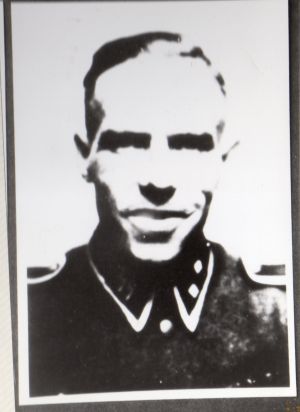
Lorenz Hackenholt 1942 (Courtesy Mike Tregenza)
Born on 25 June 1914 in Gelsenkirchen. After attending the local elementary school until the age of 14 , he became an apprentice bricklayer and on passing the trade examinations worked on various building sites.
Lorenz Hackenholt joined the SS in 1934 and as part of the 2 Totenkopf Brandenburg Division was stationed at Oranienburg, north of Berlin, and he was transferred to the Sachsenhausen concentration camp in March 1938, where he was employed in the motor pool and as a driver for the camp command and personnel. In November 1939 he was summoned to Voss Strasse, along with Josef Oberhauser Siegfried Graetschus and Werner Dubois from the Sachsenhausen camp staff and was interviewed by Viktor Brack, the head of Hauptamt II of the Führer's Chancellery, and one of the men responsible for the Euthanasia programme, of killing mentally-
Lorenz Hackenholt drove the bus with SS NCO's in to the Grafeneck Castle institute in the Swabian Alps, south of Stuttgart. From the begining of 1940 when Grafeneck became operational until the summer of 1941 when the gassings were stopped on Hitler's orders, Lorenz Hackenholt served in all six T4 institutions, both as a bus driver and as a so-
After the termination of theT4 gassings, Hackenholt, together with a small group of SS NCO's from the Foundation, was transferred in the autumn of 1941 to serve the SS-
Lorenz Hackenholt rapidly became the gassing expert of Aktion Reinhardt, he was the one who started the motor which fed the three chambers with deadly carbon monoxide fumes, when the extermination camp became active in March 1942. A few months later he designed and supervised the construction of a new gas chamber building with six chambers, and which bore his name'Stiftung Hackenholt.' (Foundation Hackenholt). In August 1942 Lorenz Hackenholt was ordered to Treblinka by Christian Wirth, the Inspector of Aktion Reinhardt camps, in order to construct the larger gassing facility there. Erwin Lambert the T4 construction expert and Lorenz Hackenholt were then sent by Wirth to Sobibor death camp in order to build new gassing facilities there. After completing this task Hackenholt returned to Belzec death camp and he was subsequently involved in the exhumation and cremation of the gassed victims that had been buried in mass graves. In the spring of 1943 Lorenz Hackenholt returned to Treblinka on orders from Wirth to assist with the cremation operation. He was one of the excavator drivers.
Following the closure of Belzec in May 1943 Hackenholt was transferred to the Alter Flugplatz (Old Airfield) camp in Lublin, which was the main sorting, cleaning and storage depot for the vast amounts of belongings and valuables seized from the Jews murdered at Belzec, Sobibor and Treblinka. Valuable furs were disinfected with Zyklon B in four specially constructed chambers. After SS-
Whilst some of his former colleagues said in interrogations after the war had ended that Hackenholt had been kiiled in action, it would appear that he almost certainly survived the war and was living in the Allgau area around Memmingen – Kempten in the German – Austria border region. Was possibly spotted by his brother driving a delivery van. Lorenz Hackenholt has never been brought to trial and no further information is known.
HIRCHE, Fritz
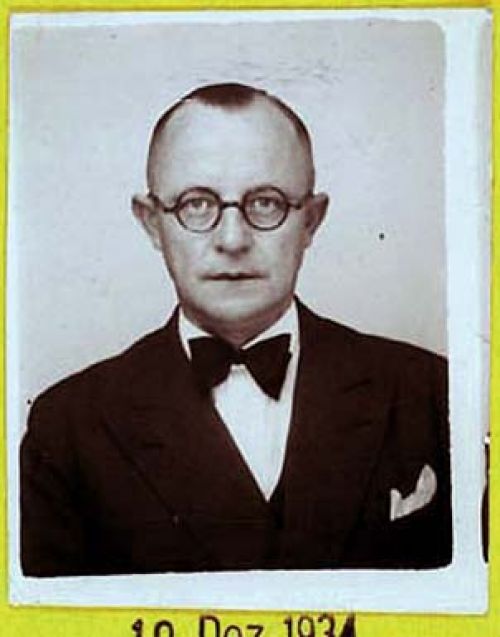
Fritz Hirche
Born on June 10, 1893, in Penzig, Oberlausitz. He was employed as a manual labourer, before becoming Assistant Detective. He was a member of the Nazi Party since 1933, and joined the T4 organisation in 1939. He was chief of the office and captain of the Schutzpolizei at Bernburg and then at Hartheim. He was transferred to Belzec. Committed suicide.
JIRMANN, Fritz
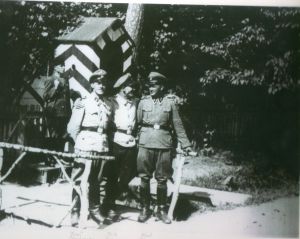
Oberhauser, Jirmann, Franz - Kommandantur Entrance at Belzec
Born on January 11, 1914, in Barzdorf, Braunau. He served at the Buchenwald Concentration Camp, before being recruited along with Kurt Franz and Erich Floss into the T4 Organisation. He was posted to the T4 Institute at Grafeneck. He was posted later on to Belzec, where he was feared as a brutal member of the camp's garrison, as recalled by inmate Rudolf Reder. He was killed by Heinrich Gley, in an accidental shooting on March 1, 1943, involving two Ukrainian guards in the dark, at the punishment bunker, near the Kommandantur. He was buried at the German military cemetery at Tomaszow Lubelski, until 1995, when his remains were moved to the German Military cemetery in Przemysl.
JUHRS, Robert, Emil
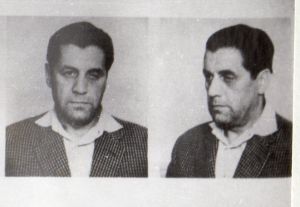
Robert Juhrs
Born on 17 October 1911 in Frankfurt am Main. By profession he was a painter, but he also worked as a labourer, caretaker, and usher at the Frankfurt Opera House and an office clerk. After serving at the T4 institute at Hadamar, where he was employed as a male nurse, painter and clerk until late 1941.
He was posted to the Belzec death camp in June 1942, where he served at the ramp and at the Lazarett shooting the sick and disabled.
In March 1943 he was posted to the Jewish labour camp at Dorohucza, where peat was dug and he remained until early November 1943. Juhrs escorted the Arbeitshaftlinge from Dorohucza to Trawnki, where all of them were shot during Aktion Erntefest (Harvest Festival).
Following the revolt in Sobibor in October 1943, Juhrs was sent to Sobibor to help with the dismantling of the camp and he formed a guard cordon of the last prisoners to be killed at Sobibor, once they had finished with the clean-
Juhrs was ordered to Italy in December 1943. He was acquitted at the Belzec Trial at the Landgericht Munich in 1963 and he was also acquiited at the Sobibor Trial in Hagen on 20 December 1966 on charges arising from his involvement in the demolition of the camp.
KAMM, Rudolf
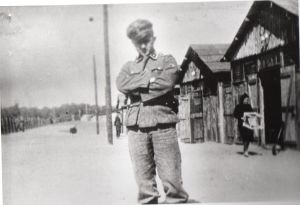
Rudolf Kamm at Belzec
Born in 1905 in Sedenz, a village near Teplitz Schonau in the Sudetenland. He served at the T4 institute at Pirna /Sonnenstein as a 'burner.'
He was posted to the death camp at Belzec in 1942 and records from the nearby hospital at Tomaszow Lubelski show that he was hospitalised on 17 June 1942 until the 25 June 1942 and again on the 30 December 1942 until the 31 January 1943 with typhus. *
He was transferred to Sobibor in 1943 where he supervised the sorting barracks. He was posted to Italy. Franz Suchomel testified that he saw him for the last time after the end of the war, in a Gasthaus between Mauthern and Hermagor, Carinthia (Austria), the last lodgings of our former unit (R-
*Note; A number of the SS garrison were also hospitalised at Tomaszow Lubelski, including Schwarz and Unverhau as well as Kamm, and a number of Trawniki – manner were also hospitialised, and some of them died of typhus.
KLEMINSKY, Otto
Born during 1906, possibly in Berlin. After service in T4, he was posted to Belzec, from July 1942, until the spring of 1943. He was transferred later to Udine, Italy. Post war fate unknown.
KLOS, Walter
Served as a driver for the T4 at Bernburg and Pirna/ Sonnenstein institutions. Also served at the Belzec and Sobibor death camps in Poland. He was transferred to the Lublin Concentration Camp, where he died in unknown circumstances.
KRASCHEWSKI, Friedrich
Served at Belzec until September 1942, when Christian Wirth transferred him. He later served in Trieste, Italy.
NIEMANN, Johann
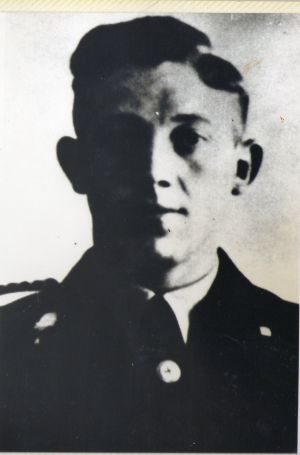
Born on 4 August 1913 in Wollern Ostfriesland. He served at a number of concentration camps such as Oranienburg, Esterwegen and Sachsenhausen between the years 1934 – 1941. He was a member of T4 and was employed as a 'burner' at the Bernburg institute.
Niemann was posted to service in the east at the Belzec death camp before being posted to Sobibor in January 1943. Niemann was promoted to the rank of SS-
OBERHAUSER, Josef

Josef Oberhauser in Munich at the Belzec Trial
Born on September 20, 1915, in Munich. He worked on farms after leaving school. In 1935, he joined the SS, and the Nazi Party. At the outbreak of the Second World War, he served with the Liebstandarte Adolf Hitler. From 1940, he worked in the T4 institutes at Bernburg, Brandenburg, and Grafeneck burning corpses.
In November 1941, he was assigned to Odilo Globocnik the SS and Police Leader Lublin and he was responsible for the construction of the Belzec death camp, that commenced the same month. He served at Belzec until August 1942, when he became Wirth's adjutant, when Wirth took up the post of Inspector of the SS -Sonderkommando Aktion Reinhardt. Oberhauser was promoted to the rank of SS-Untersturmfuhrer, because of his service to Aktion Reinhardt.
In the autumn of 1943, he was ordered to Italy, where he became the commandant of the camp at San Sabba, Trieste. Oberhauser was captured by British troops in Bad Gastein, Austria, in May 1945. In 1948, he was sentenced to fifteen years' imprisonment by the Magdeburg Landesgericht for participation in euthanasia crimes. He was released in April 1956 and he was employed as a casual worker and a barman in Munich.
In 1965, he was tried by a jury in the Landesgericht I in Munich at the trial of the Belzec garrison and he was sentenced to a total of four years and six months imprisonment for the crime of acting as an accessory in the common murder of 150 people. Oberhauser was interviewed by Claude Lanzmann, in the film Shoah, in the Franziskaner Poststubl about Christian Wirth and the number of Jews murdered at Belzec.
ORLIEWSKI, Eduard
Born during 1905 in Berlin. Served at the T4 Institution at Pirna-Sonnenstein as a 'burner.' He also served in Belzec. Fate unknown.
SCHEMMEL, Ernst
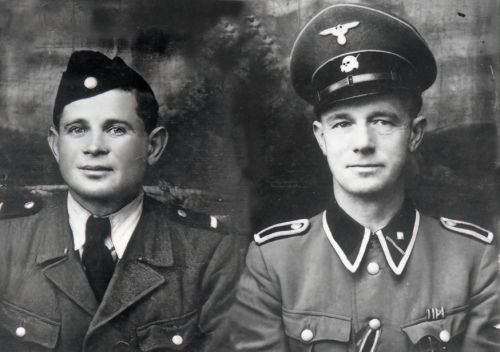
Ernst Schemmel and Iwan Hjuzia at Belzec
Born on 11 September 1883, in Kirchhain, located between Dresden and Berlin. A career police officer, he was a member of the Kripo (Criminal Police). He was employed at the T4 Institute at Pirna / Sonnenstein and at another T4 Institute at Hartheim , Austria. He served at the Belzec death camp and then served at Treblinka from late September to early October 1942, where he acted as a deputy for commandant Franz Stangl. He died from a heart attack in Dresden on 10 December 1943.
SCHLUCH, Karl, Alfred
Born on October 25, 1905, in Lauenberg, Pommern. He spent his childhood with his grandparents. After attending elementary school he became an agricultural worker. From April 1930, he was employed as an attendant at the sanatorium run by Dr. Wiener in Bernau, near Berlin. He passed his public nursing examination in 1932. He joined the Nazi Party in 1936 and the T4 organisation on June 13, 1940, where he served at Grafeneck and Hadamar institutions. During the winter of 1941-42 he served in an Organisation Todt transportation unit for wounded soldiers on the Eastern Front.
Karl Schluch was transferred to Belzec during June 1942, where he served on the ramp and accompanied the naked Jews through 'der Schlauch' to the gas chambers. After Belzec was closed down in May 1943, he served in the Poniatowa Jewish Labour Camp. In the autumn of 1943, he was sent to Italy to fight the partisans. At the end of the Second World War he was arrested by US Forces, but released on July 6, 1945.
He then returned to being an agricultural and construction worker, before returning to the nursing profession at a hospital in Bedburg -Hau.
SCHMIDT, Fritz

Fritz Schmidt in Treblinka death camp
Born on 29 November 1906, in Eibau, Saxony. He was employed in the T4 Institute at Pirna/ Sonnenstein in 1940, as a guard and driver and in 1941, he was transferred to the T4 institute at Bernburg. He was posted to Treblinka in the summer of 1942. In Treblinka he served in the Totenlager, where he supervised the gas chambers. He was also in charge of the garage and was chief of the metal workshop. He was transferred to Sobibor during September 1943, until the camp was liquidated. He was then posted to Trieste, Italy and was captured by the Americans at the end of the war, but was released and he returned to Germany. He was arrested in Saxony and put on trial. On 14 December 1949, he was sentenced to nine years in prison, but he escaped and went to West Germany, where he lived undisturbed until his death on 4 February 1982.
SCHNIEDER, Friedrich
A Volksdeutscher who was in charge of the Trawnikimanner at Belzec.
SCHWARZ, Gottfried

Born on the 3 May 1913 in Furth/ Bayern. He served at Grafeneck and Bernburg psychiatric institutions as a "burner". He was posted to Belzec death camp, Schwarz and Oberhauser greeted Wirth on his arrival at the site of the future death camp. Schwarz was one of the most brutal SS-
Schwarz also served at the Sobibor death camp and was there when Erich Fuchs tested the gas chamber engine, in the spring of 1942. Schwarz was appointed the Commandant of the Dorohucza labour camp, and after Aktion Reinhardt ended, he was posted to Italy. On the 19th June 1944 he was killed in action at San Pietro, and was buried at the German Military Cemetery at Costermano, near Verona.
TAUSCHER, Fritz

Fritz Tauscher Second from left - outside Belzec Kommandantur
Born on May 20, 1903, in Planitz, near Zwickau. He worked as a supervisor at the registry office in Pirna /Sonnenstein. Also served at Brandenburg and Hartheim T4 institutes. He was transferred to Belzec in October 1942, he served there until March 1943, where he was in charge of the cremation of the exhumed bodies. Tauscher according to fellow SS NCO's Juhrs and Zierke, was the last commandant of Dorohucza , the Jewish Labour Camp, after serving for a time at the Budzyn Labour Camp. He was then posted to Trieste, Italy. He committed suicide whilst in a remand prison in Hamburg.
UNVERHAU, Heinrich

Unverhau, at Belzec
Born on 26 November 1911 in Vienenburg, Goslar. In April 1925 he became a plumber's apprentice, but as a result of an accident at work, he lost the sight in his right eye, and he was forced to end his apprenticeship. He became a muscian and from 1934 he worked as a nurse.
In January 1940 he was ordered to join T4 and he was employed at Gafeneck and Hadamar institutes, as a nurse. In the winter of 1941 /42 he was drafted to the Eastern Front for service in the Organisation Todt looking after the wounded in Raume Wjasma.
In June 1942 he was posted to the Belzec death camp and whlst there in November 1942 he was hospitalised at Tomaszow Lubelski with spotted typhus and this disease caused him to lose his right eye completely. At the death camp he was responsible for sorting the possessions in the railway sheds located just outside the death camp, opposite Belzec railway station.
In the summer of 1943 he was posted to the Sobibor death camp where he supervised the cleaning up the undressing area in Lager II and in one of the sorting barracks. Unverhau was ordered back to the former death camp site at Belzec to help with the planting of trees to erase the traces of the crimes committed there. He repeated this role at the Treblinka death camp in September 1943 returning to Sobibor in November 1943, just in time to help with the re-
VALLASTER, Josef
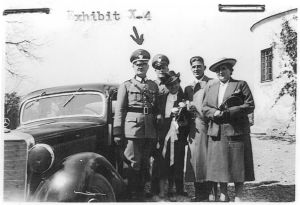
Wirth, Reichleitner and Vallaster at his wedding
Born on 5 February 1910 in Silbertal, Austria. He served in the T4 institutes of Hadamar and Hartheim. He was posted to Belzec and then Sobibor in April 1942. He worked in Lager III, supervising the gassing and burial – later burning – of the victims. He often drove the narrow-
VEY, Kurt
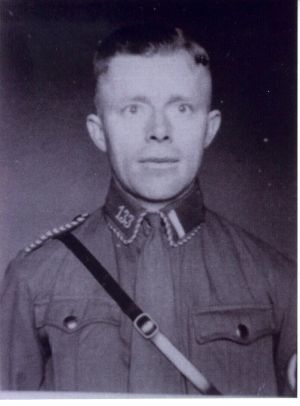
Kurt Vey
Born on July 12, 1901. He worked at the T4 institute at Pirna /Sonnenstein in the office. He was posted to the Belzec and Sobibor death camps. At Sobibor he worked in Lager II and after Sobibor was closed down, he was posted to Trieste, Italy. He was killed in a fight with partisans.
ZANKER, Hans
Born on 8 September 1905, in Sachsen. He served in the T4 institutes of Pirna / Sonnenstein as a cook. He served at the death camps in Poland including, Belzec, Sobibor and Treblinka. Also served as a cook at the Jewish labour camp in Poniatowa. Posted to Trieste, Italy.
ZIERKE, Ernst Theodor, Franz
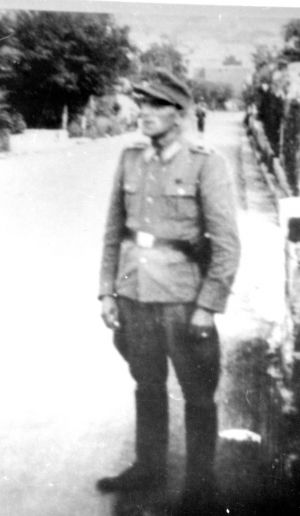
Ernst Zierke in Italy
Born on 6 May 1905 in Krampe, the son of a railroad worker. After he graduated from elementary school he worked as a forester, and in 1921 he was apprenticed to be a blacksmith. After passing the blacksmith apprenticeship exams he was employed in agriculture from 1925.
In 1934 he changed careers and became a nurse at a clinic at Neuruppin near Brandenburg and was summoned to the T4 Headquarters in Berlin in December 1939 and he served at the T4 institute at Grafeneck and Hadamar.
In the winter of 1941/42 he was drafted into the Organisation Todt for the care of the wounded in Russia. He returned to Germany and worked at a T4 institute at Eichberg, near Rudesheim. He was posted to Belzec death camp in June 1942 where he served until March 1943. At Belzec he served on the ramp.
In March 1943 he was transferred along with Robert Juhrs to the Jewish Labour at Dorohcza, which dug peat, until November 1943. Zierke was amongst the SS who escorted the Jewish Arbeitshaftlinge from Dorohucza to the neaby Jewish Labour camp at Trwniki, where all of them were shot, as part of Aktion Erntefest (Harvest Festival).
Zierke was sent to Sobibor death camp, to help with the closure of the camp, and he formed part of the cordon that watched over the final liquidation of the Jewish workers from Treblinka. He was then posted to Italy.
Zierke was acquitted at the Belzec Trial in Munich in 1964 and was released from custody during the Sobibor Trial in Hagen on health grounds. Zierke died on 23 May 1972.
Support Staff
GOCKEL, Rudolf
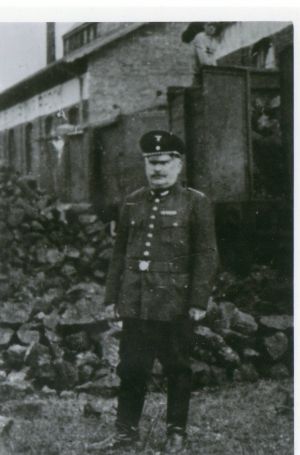
Rudolf Gockel
Born on June 23, 1884, in Berbach, to Karl and Lisetty Gockel. He worked for the Reichsbahn, and was responsible for the Belzec railway station, where he was the station master. He drove the trains packed with deportees into the death camp. He was arrested in Eisenach in 1946, and extradited to Poland and imprisoned in Zamosc for three years, but never charged. He died in 1965, in Lauffen am Neckar, near Stuttgart.
Sources
Sara Berger, Experten der Vernichtung, Hamburger Institut fur Sozialforschung, Hamburg, 2013
Chris Webb, The Belzec Death Camp, Ibidem-
Brandenburgisches Landeshauptarchiv Potsdam
Thanks
Michael Tregenza - Lublin
Kelvin Perry
Robert Parzer
NARA - Washington DC
Photographs - Holocaust Historical Society, UK, Mike Tregenza, NARA Washington, Regional Museum Tomaszow Lubelski
© Holocaust Historical Society, March 18, 2025

